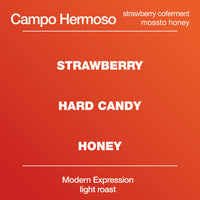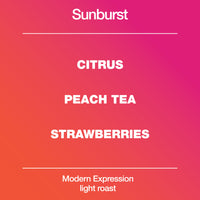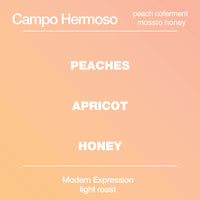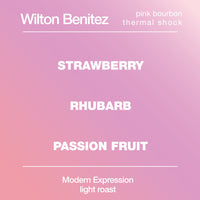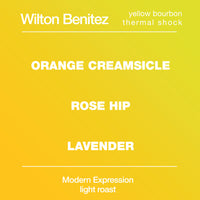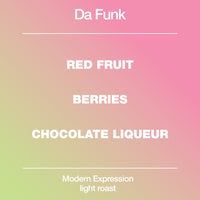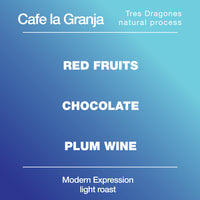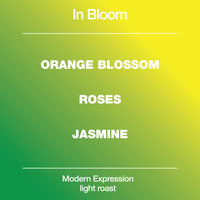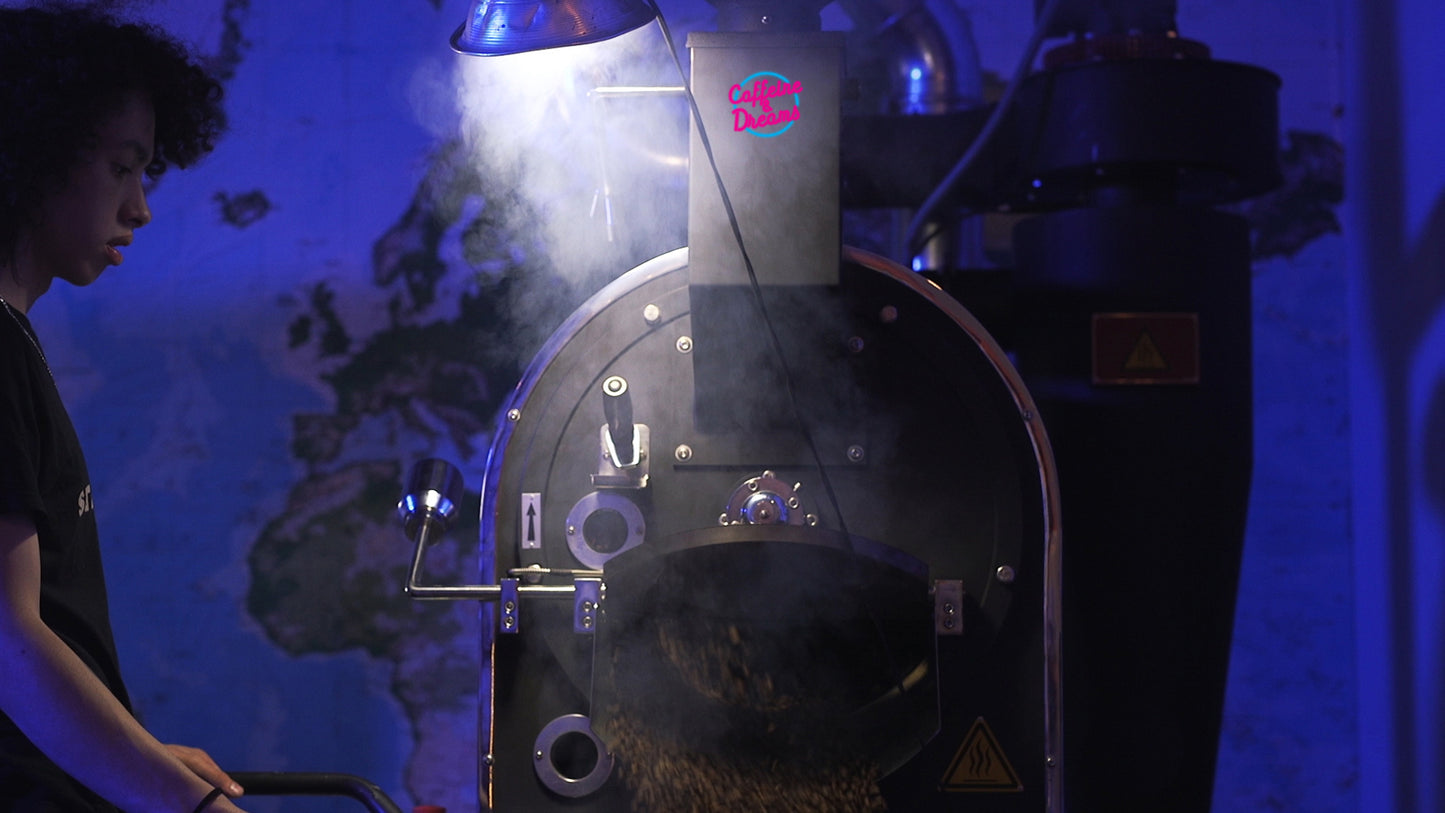
Coffee roasting dates back to the 15th Century. For much of coffee's history, the roasting process has remained the same. Roast the beans until they're dark brown and you're good to go.
Within the last 50 years, coffee roasters have discovered newer roasting methods and techniques that preserves the coffee bean's natural unique flavor profile. Those processes and techniques generally utilize a lighter roasting profile and are typically only used on high quality coffee. You wouldn't want to lightly roast a poor quality coffee bean. A lighter roast exposes what the true nature of the bean is.
Light roast coffee is typically very complex in flavor. It can taste like floral tea, chocolate liquor, or even blueberry pie.
How is this possible? Why does light roast coffee have such a range of diverse flavors when most dark roast coffee tastes the same? Do light roasts have more caffeine than dark roast?
We'll answer all these questions and more in this ultimate guide to light roast coffee.
What Is Light Roast Coffee?
As you might guess, the thing that differentiates light roasted coffee from other types is the roasting process it undergoes. Coffee roasting is the process of heating coffee beans to turn them from green to brown. The three different coffee roasts you will see in stores are distinguished primarily by the color of the beans after roasting. So its easy to distinguish a light to dark roast simply by looking at the bean itself. Light roast beans have a light brown appearance and a matte surface. Dark roast beans have a dark brown appearance and a shiny surface.
The full answer to the question of "what does light roast coffee mean" is a bit more complicated than you might think. Roasting is a precise art, and there are several factors that distinguish the three types of roasts from each other.
Light roast coffee is made from coffee beans that are roasted to a light brown color. These beans are roasted to an internal temperature of 350-400 degrees Fahrenheit. Medium and Dark roast beans, by contrast, are roasted at temperatures between 405-435 degrees Fahrenheit.
The other difference besides color between light and darker roasted coffee is the quality of the coffee used and as a result the complexity of flavor one can achieve when brewing. This of course you cannot see with your eyes, but you can taste it with your tongue. As mentioned already lighter roasted coffee exposes the true nature of the beans quality, a poor quality coffee lightly roasted will taste, well like poor quality coffee. A poor quality coffee darker roasted will taste, well like a darker roasted coffee. We at modcup like to think of a darker roasts like a sauce in cooking. You can hide a bad steak with a good sauce.
What Does Light Roast Coffee Taste Like?
One of the most unique things about light roast coffee is that every roast tastes different. Light roasts can taste like peach tea, blueberry pie, chocolate liquors, tropical fruit salads, and even more.
If you've only experienced dark roast coffee so far, you may wonder how this is even possible?
This incredible range of flavor is possible because the coffee bean is actually the seed of a fruit. These seeds have one of the most complex flavor profiles of any on the planet. When properly roasted, it can display double the flavor complexity of the finest wines.
The purpose of light roasting is to bring the unique flavors and characteristics of a particular coffee bean to the surface. So with high-quality coffee, lighter roasting is better. It preserves the coffee's natural brightness, aromas, and flavor.
Each bag of coffee that we roast at modcup has a distinct profile created by its roast timing, temperature, and rest. The altitude, humidity, soil quality, rainfall, temperature, and density and varietal of the crops on the farm where the beans are grown all help us determine how we roast a particular batch of beans.
Our tailored roasting processes highlight the characteristics that are already present in the coffee bean. We roast for brightness, sweetness, and balance to create the absolute best light roast coffee that we can. We also try to avoid the smoky, ashy flavors typically found in darker roasts.
How Do You Brew Light Roast Coffee?
You can brew light roast the same way you would brew a normal coffee. But there are a few things to pay attention to during the process.
First, when grinding your coffee beans, make sure you select the right grind size and right grinder for your brew method. Because light roast coffee has such dynamic flavors, it can also be brewed at different temperatures for different results.
The length of time that you brew the beans also affects the flavor. Different brewing methods will require different extraction times and produce different flavors. An espresso takes about twenty-five seconds to brew, while a pot of coffee can take upwards of five minutes.
Another thing to keep in mind is that a coffee's flavors can change considerably over time from its day of roast . As coffee ages, it oxidizes and begins to lose its original flavor profile. This is why you should make sure that you're using the freshest coffee possible to get the best flavor. Having said that, the lighter the roast the more intact the structural integrity of the bean remains. And conversely the darker the roast the more porous the bean is. This is important re the freshest coffee possible. See our blog post on freshness for more on the best time to brew your freshly roasted coffee
While you can brew light roast coffee using any method, pour-overs and other drip methods are the most effective way to brew the perfect cup. With freshly ground beans, a properly executed pour-over creates a clean, flavor complex, and light-bodied taste that brings the bean's subtly to the forefront.
What to Pair With Light Roast Coffee
The purpose of lightly roasting a coffee is to draw attention to its natural inherent flavors, showcase why a roaster paid the good money they did for it. High quality green coffee generally has a higher acidity and higher acidity in the hands of a skilled roaster should equate to much sweeter coffee. In general, you should avoid adding sugar, sweeteners, syrups, and in many cases even milk with a high quality lightly roasted coffee.
Light roasts pair beautifully however with the right foods at breakfasts or when snacking in the afternoon. Each light roast tastes different but you can count on dynamic fruity or floral flavors, silky bodies, and sparkling acidity.
For creamy pairings, we recommend cheesy scones, buttery croissants, avocado toast, and lunch sandwiches. For tangy pairings, we recommend berries, fruit pies, and toast with jam.
Is Light Roast Coffee Stronger?
There is a popular myth that because the beans are roasted less, light roast coffee retains more caffeine. The truth is that the difference in caffeine content between light and dark roasts is mostly insignificant.
The idea of coffee density, however, is relevant to caffeine content. It's important to note that dark roasts lose density during the roasting process and increase in size.
So let's say you take one tablespoon of light roast beans and one tablespoon of dark roast beans. You'll have more individual beans in the light roast teaspoon than you will in the dark roast one because the dark roast beans are larger. Therefore, there is more caffeine in the scoop of light roast because it contains more beans.
By contrast, if you measure light roast vs dark roast by weight, they will have roughly the same caffeine content. This is because the size of the beans doesn't matter when measuring by weight, only their mass. Even though it would appear as though you had more dark roast beans, because they are bigger, you would actually have an equal amount.
In truth, the caffeine content per cup has more to do with the brew method than it does with the roast. Espresso, for example, is ounce-for-ounce stronger than drop coffee. But you do drink less liquid overall when consuming espresso than you do when consuming drip coffee.
At the end of the day, light roast coffee is not inherently stronger than dark or medium roast. The difference between the two lies primarily in the wealth of flavor that light roast is able to exhibit.
Light Roast Flavors by Region
We mentioned earlier that there are many factors that affect the taste of a particular coffee when roasted lightly. A lot of these factors have to do with how the varietal of the beans and how they are farmed. Altitude, humidity, soil quality, rainfall, temperature, and varietal and density of the crops on the farm where the beans are grown all contribute to a bean's flavor profile.
There can be a lot of similarities in these factors in a particular growing region. This is why different growing regions have developed a reputation for producing particular flavors of coffee.
There's no hard and fast rule about how coffee from a particular region will taste. But coffees from Guatemala and Honduras are botanically similar, and farmers in both countries process their coffees in a particular way. This creates certain flavor similarities between coffee grown in these two countries.
This is a general guide to these flavors. It doesn't apply to every single coffee grown in a particular region. But it will give you some guidance on where to start if you're brand new to the world of single-origin coffee.
Central America
Many countries in Central America are large contributors to the global coffee supply. We see a lot of these coffees in North America, as it's cheaper and easier to buy and ship coffee from this region than it is from Africa.
Central America is a real powerhouse in the specialty coffee scene. Costa Rica, El Salvador, Guatemala, Honduras and the Jewel in the crown Panama can all produce fantastic world class coffees.
Coffee grown in Central America contain varying amounts of acidity depending on the country (varietal of coffee grown, elevation & soil and micro climates vary dramatically from country to country).
But as a rule coffees from Central America are often described as balanced. This is because their fruity characteristics create a beautiful backdrop for their spice and cocoa flavors to dance on top of.
Panama has become the gold standard in boutique coffee and every year breaks price records. This is primarily a result of the planting and cultivation of a specific rare coffee plant called Gesha but the unique nature and characteristics of the country cannot be underestimated either. Gesha is now grown all over the world, but rarely does a gesha coffee grown in another country ever get close to matching the incredibly complex flavors that a Panama Gesha coffee can display. The Hacienda Esmerelda is the farm in Panama that put Gesha on the map and it still knocks it out of the park every year. This Gesha from them scored 94 with coffee review and is a most wonderful example of what coffee can be, snag some now before it's gone.
South America
When people think about South American coffees, they typically think about ones from Brazil or Colombia. It makes sense because Brazil is number one in terms of volume of coffee produced in the world and Colombia number three.
The classic Brazilian coffee profile is nutty and due to the lower elevation of the coffees grown in Brazil they carry a lower acidity too. You can find chocolate and spice notes too and a combination of all these qualities make Brazil beans a popular choice for espresso blending.
When sourcing coffees from Brazil we at modcup typically look to import coffees that have used an experimental fermentation process. This process brings the acidity and sweetness that is often lacking in coffees from the region. A great example of that is our Jorge Fernando microlot.
The classic Colombian profile features a mellow acidity and strong caramel sweetness. They sometimes have rich, nutty undertones as well. These coffees have a very recognizable flavor and are often described as sweet and medium-bodied. As a result Colombian coffees are some of the most popular in the world as they can run that middle road of appealing to all.
Colombia for specialty coffee roasters is an incredibly exciting origin however and there is nothing middle of the road about it. Its an incredibly diverse growing region, with soaring elevations and unique growing conditions in many many micro climates that span the breadth of the country. It also has some of the most innovative and daring coffee farmers who are willing to play with coffee plant varietals not native to the country and who are willing to employ incredibly daring cherry processing more akin to the wine industry than the coffee industry. modcup has been working with the world famous Cafe La Granja Esperanza for three years now and imports some dazzling examples of this innovation. This Sidra rare varietal is something to behold.
Ethiopia
Ethiopia is home to incredibly biodiverse coffee. Thousands of varieties grow here, many of them wild and uncatalogued. There are two different processing methods in Ethiopia and each one produces strikingly different flavor profiles.
With natural processing, the cherry is dried around the coffee bean before it is removed. This creates a syrupy body and a densely sweet berry flavor.
These coffees tend to be fruity, heavy, and wine-like. Our Ethiopia Gedeb Natural is the perfect example of this kind of profile.
The second type of processing is called washed process. In this process, the skin of the fruit is stripped from the bean within 12 hours of picking and the beans then washed (fermented) in water baths to remove the sticky muscliage. This method creates coffees with a floral or tea-like delicacy.
These coffees often have jasmine or lemongrass characteristics that are lighter and sweeter on the palate. This Ethiopian Heirloom coffee from The Haru washing station in Yirgacheffe is a beautiful example of the delicate floral flavors found in washed Ethiopian coffees. Balanced florals and stone fruit juiciness are what washed coffees from this region are known for.
Kenya
Kenyan coffees are known for being big, bold, and juicy. Their wide botanical variety, post-fermentation soak, and the fact that most of the coffee here is grown without shade gives Kenyan coffee an incredibly unique profile.
You can expect mouth-puckering savory-sweet characteristics that sometimes manifest as tomato-like acidity, and others as a black-currant tartness. Kenyan coffees are also uniquely juicy and tropical-tasting.
Indonesia
Indonesian coffees typically have a dark, deep, almost meaty earthiness to them. They tend to have stout, mushroom-like complexity that is herbaceous and savory. Their long-lasting finish tastes like dark, unsweetened cocoa.
Sumatran coffees in particular are actually excellent for dark roasting. They typically have toasty, smoky flavors that dark roasting highlights beautifully.
Try the Best Light Roast Coffee Brands Today
Every bag of light roast coffee is deliciously unique. The light roast process preserves the bean's natural flavor profile and allows aficionados to enjoy coffee as it was meant to be.
Our goal at modcup is to introduce people to special and unique coffee tasting experiences. Each coffee that we roast has its own distinct flavor profile.
Explore our house blends, seasonal selections, rare varietals, and Gold Label coffees today. If you're interested in buying bulk, contact us for wholesale pricing.

